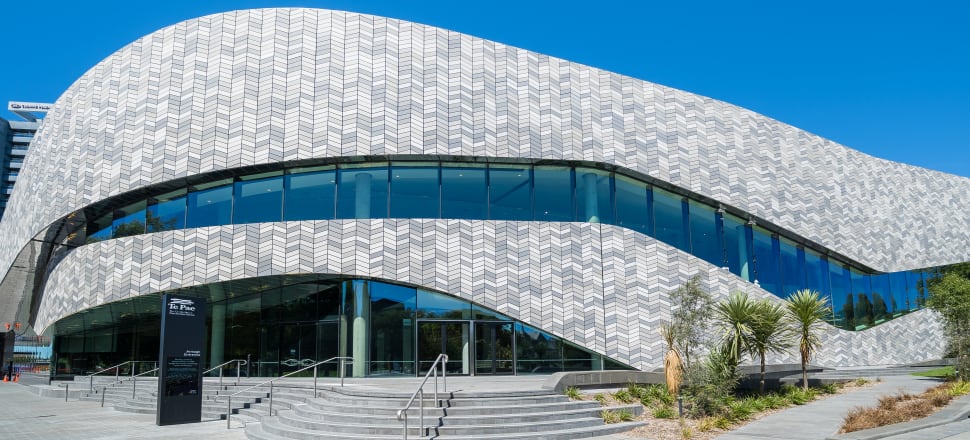
It’s bringing in millions but Christchurch’s Crown-funded convention centre costs millions, too. David Williams reports
The news was good, the figures impressive.
Earlier this month, Te Pae, Ōtautahi Christchurch’s convention centre, put out a press statement about its stellar start, after Covid-19 restrictions were dismantled.
“There’s been a real pent-up demand for Christchurch as a business events destination,” general manager Ross Steele said. “The number of events has just blown us away – we’ve really hit the ground running.”
More than 180 events have brought more than 60,000 people to the city, with an estimated injection to the local economy of almost $45 million.
Te Pae had “exceeded all expectations”, the statement said.
Well, not quite. While the centre was predicting only 100-odd events for this year, the predicted economic boost was higher a year ago, at $60 million. (Admittedly, its operation was Covid-crimped.)
READ MORE: * Upcoming conferences to bring $75.5m to Auckland * Yearly events could be the shot in the arm Auckland needs
Stepping back, it’s fair to weigh the costs, including opportunity costs, of a $475 million centre paid for by taxpayers.
“What else could you have spent it on?” asks independent economist Benje Patterson, of Queenstown. “Not just in the tourism space, but in the business-tourism space, or in the attraction of people to New Zealand that are wanting to have some sort of leisure while they’re here but are also wanting to explore business opportunities in the country?”
Te Pae’s pre-opening costs were $10 million. In the 2023 financial year, the centre is expected to have sales of $16.2m against costs of $21.1m – $16.5 million of which is operational and $4.6m for “building ownership”.
Some would say that’s small loss is worth it for the economic return. (Pre-Covid business events generated an estimated economic contribution of $1.5 billion.)
Not every conference is the same, Patterson says.
“Some delegates are very well-to-do, and will flash the cash when they’re in town. They’ll stay in the most expensive hotels, they’ll wine and dine, they’ll shop, they’ll tack on some extra days for activities.
“While others come from much more humble means and they’ll stay in an austere hotel, and they won’t wine and dine or partake in activities.”
Convention centres cost megabucks, Patterson says, “and you’re essentially selling people hospitality, which is a low-margin industry”.
“A convention centre itself is going to have to run around 24/7 to make any sort of real return.”
Te Pae might have the jump, but its economics will change, surely, when Wellington’s Tākina facility, and the international convention centre in Auckland open – next year and in 2025, respectively.
Benefits well-established
Tourism Industry Aotearoa chief executive Rebecca Ingram says the economic benefits of business events and conferences are well established.
“Business event visitors spend more than holiday visitors, and conferences are often held during the shoulder and low seasons, supporting jobs and businesses outside of the peak tourism season.
“As the pandemic has shown, virtual events have their place but nothing beats face-to-face meetings.”
(Which does overlook, somewhat, the ongoing waves of Covid.)
Anonymised emailed comments from Crown-owned company, Ōtākaro Limited, which is charged with delivering post-quake anchor projects in Christchurch, say Te Pae is an investment in the ongoing economic prosperity of Canterbury.
The same applies to Wellington. With Tākina opening next year, discussions about accommodation requirements are being held with hotel investors and developers, Business Events Industry Aotearoa chief executive Lisa Hopkins says.
“What that does is it creates more jobs and more opportunities. This is why cities around the world have these convention centres – it really is to generate more investment for more jobs.”
Conference spending also raises tax for government coffers which “has to be right for everyone”.
There are question marks over wages and conditions for workers, especially in the hospitality sector, one of the most prominent in the debate over fair pay agreements.
Hopkins says more events means more consistent work, better wages and conditions, and upskilling.
Newsroom asks her if the hospitality and hotel accommodation sectors have a benchmark for wages, a living wage promise, or guaranteed hours. She responds: “We support the industry to have wages which enable people to be able to live to be able to prosper.”
There are also other, unmeasurable benefits, Hopkins says. She points to the tie-in of holding the four-day World Conference on Women & Sport in Auckland during this year’s Rugby World Cup.
In comments provided by Hopkins, Jim Fawcett of Australia’s ASN Events, says workshops with medical practitioners specialising in endocrinology (health issues including diabetes, fertility, growth, and hormonal conditions) were held during a recent medical conference in Christchurch.
“This resulted in local specialists being able to receive the latest findings and share their knowledge with international experts, the expertise they can now take back to their patients,” he says via email.
“This is one of the many benefits an event of this type can deliver back to communities, benefits that are not nearly as tangible without face-to-face contact and discussion.”
Patterson, the economist, also embraces the intangible. He reckons every convention centre manager will have an anecdote about an overseas visitor who attended a conference and ended up investing.
Direct spending during conferences on hotels, bars, restaurants, and tourism are “chicken feed”, Patterson says, compared with the long-term value of business-to-customer connections, and establishing long-term business partners. “Those are the real gains that we really want to go after.”
Ōtākaro, the Crown company delivering anchor projects in Ōtautahi, said iTe Pae is expected to generate around $60 milllion in additional economic activity in the region each year, down from about $90 million pre-Covid.
Larger international events, which book years in advance, and provide the greatest revenue and the best economic impact, have been more adversely affected by Covid, but sales are expected to increase from these events in the next financial year.







